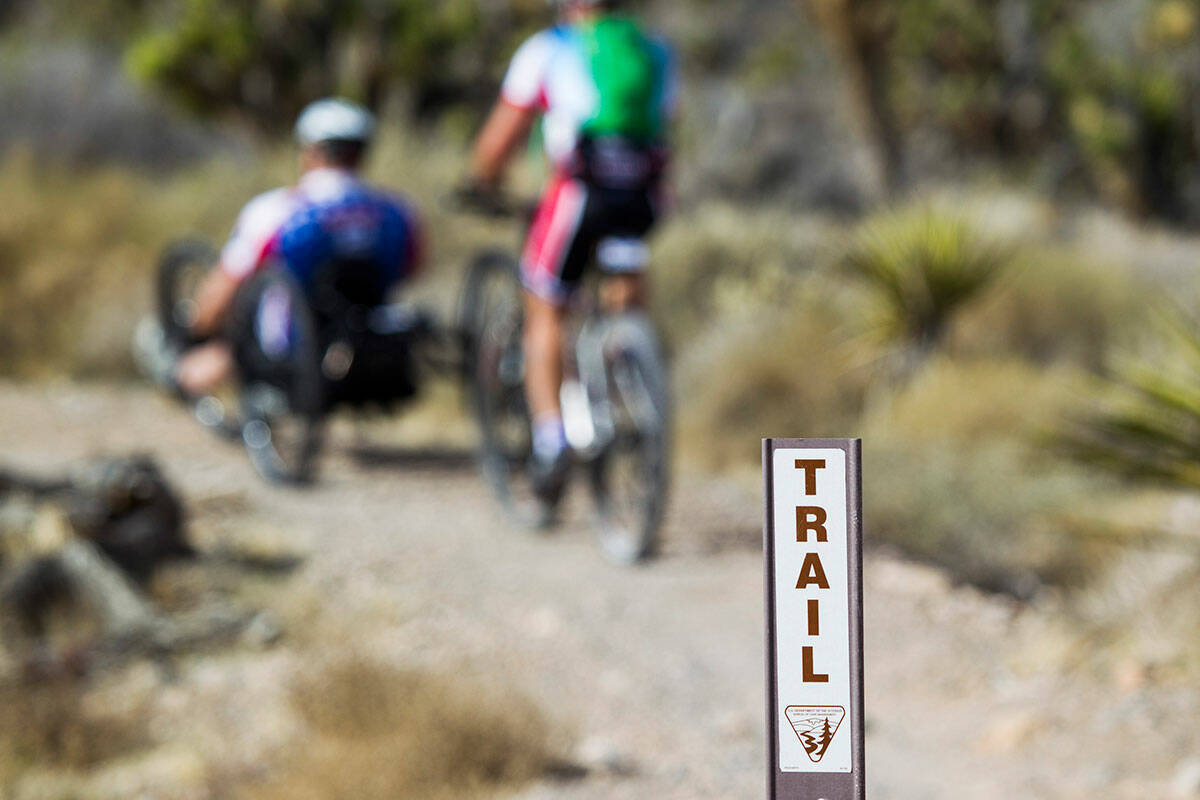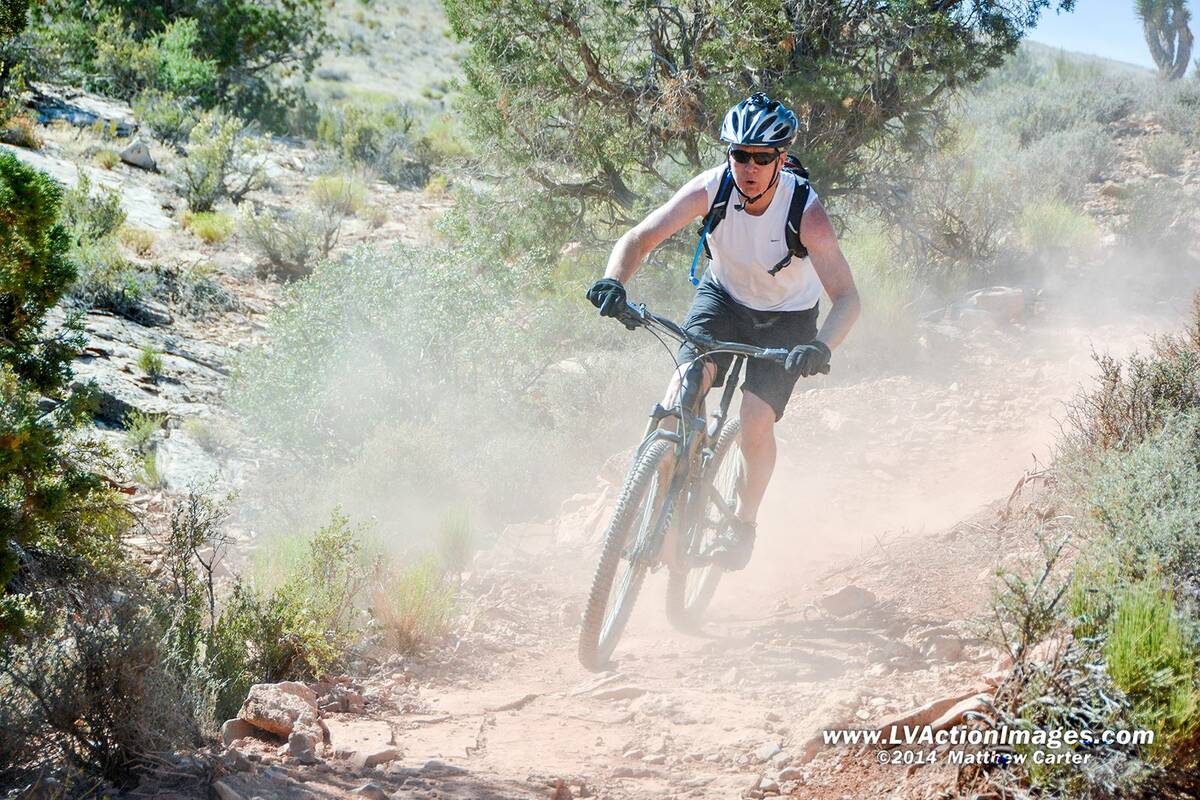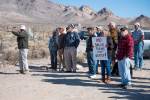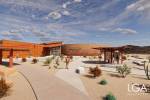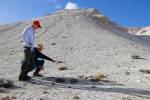Illegal hiking, biking trails are a problem. BLM wants to find a solution
Have you been out hiking or biking around Southern Nevada and realized that you weren’t on an official trail?
Since the COVID-19 pandemic, outdoor recreation in Southern Nevada has exploded in popularity. And, with more people outdoors, more people are using outdoor recreation apps to learn about trails in their area through maps and user reviews.
Sanctioned hikes built by government agencies are listed and shared on popular recreation apps like AllTrails and Trailforks, but Bureau of Land Management officials said outdoor enthusiasts also use these platforms to promote trails built without land manager involvement.
Officials said that while the data isn’t perfect, land managers have inventoried more unauthorized trails in Sloan Canyon and Red Rock Canyon national conservation areas than authorized trails. More than 50 miles of unauthorized trails have been documented in the La Madre Foothills Recreation Area of Red Rock Canyon alone.
Jon Prescott, an outdoor recreation planner for Red Rock Canyon, said apps have historically been uncooperative with BLM staff in taking these types of trails down.
In the past year, one app gave the agency administrative powers to block or restrict trail use in certain protected areas, but another only allows the agency to request a trail be removed, Sloan Canyon manager Jenna Giddens said, and trails often pop up again after they get deleted.
Trailforks has an exclusion zone for Sloan Canyon south of Henderson. App users are not allow to create mountain bike trails in that zone.
An AllTrails spokesperson said that the app “(welcomes) park and land managers to connect with our public lands team so that we can work together to maintain trail information that is accurate and up-to-date for all,” as well as community members who can suggest edits to routes and leave trail reviews.
Giddens said what has been more effective in stopping illegal trail building is talking with recreation associations to get the word out about the harm in building social trails and the agency’s openness to collaborating with trail builders.
Addressing illegal trails
Last year, after the BLM discovered an elaborate construction for a mountain biking trail in Sloan Canyon, the land managers faced a choice: Get law enforcement involved, or extend the vandals an olive branch and give them their tools back.
Trailbuilders left tools, a 50-gallon drum and lumber lying among creosote brush where they had been constructing an unauthorized wall for mountain bikers in the desert illegally.
The agency took the tools and left a note for the builders telling them when they planned to dismantle the project. Giddens said she reached out to the local mountain biking community online looking for the culprits.
“I let them know that it would be more heavy handed in the future, but that this was our opportunity to work together.”
Instead of shutting hikers and bikers out of trail-planning conversations, officials say they want to work with illegal trail builders to find out what kinds of trails do and don’t work in Nevada’s public lands.
Unauthorized trails, at their worst, can degrade the environment, cause drainage problems, destroy cultural sites and artifacts and harm sensitive plants or animals. But, at their best, these trails can be good candidates for future official trails, officials said.
The Southern Nevada Mountain Biking Association is one group working with the BLM to plan future trails and help map and analyze existing trail networks across the valley’s public lands.
Alison Cormier, an education coordinator with the association, says it hasn’t always been on good terms with the BLM.
“For a while, the land managers really just thought that they could tell mountain bikers to stop it, and that we would just go away,” Cormier said. “Clearly, that did not happen. We have people now, particularly in the Red Rock field office at the BLM, that understand that they need to work with us, they need to help us understand why there are issues with just random building of trails.”
Cormier said mountain bikers in the community have shared concerns with her about working with federal officials on trails, saying that the agency can’t build trails fast enough.
Red tape slows bikers down
BLM officials said getting new authorized trails is often slowed down by federal law and regulations.
One hurdle is the National Environmental Protection Agency Process, which requires federal agencies to assess the environmental impacts of a potential project. Assessments include lengthy land surveys, specific trail standards, public comment periods and budgeting enough time to make modifications.
But environmental assessments and surveys, like anything else, cost money and manpower, Cormier said.
“If you’re waiting for the BLM people to do it, it’s just going to take a long time, just because they’re overwhelmed with priorities … it’s kind of boiled down to money and time,” she said.
Asselin said he understands the public’s frustration with the lengthy approval process.
“Sometimes it takes longer than a lot of people would like it to. We just ask that people understand that we’re not trying to stonewall. It’s just that some things take a long time, and we have limited manpower,” he said.
Funding future trails
The SNMBA has been working to speed up the approval process by applying for grants to help pay for surveys, Cormier said.
This month the International Mountain Bicycling Association awarded the biking association with a professional trail plan for a 9-to-15 mile trail system near Red Rock Campground.
The association is also on a tentative list from the Nevada Division of State Parks to receive funds for trails in Cottonwood Valley — a popular mountain biking area in Red Rock Canyon — through the Federal Highway Administration’s Recreational Trails Program.
Cormier said going through the process with the BLM is worth it in the end, because illegal trails are often removed or destroyed by developers and land managers.
“The fact that (these trails) will remain into the future is the exact reason why it’s better to work with the BLM and do things the right way, even if it does take longer than to do things the wrong way,” she said.
Giddens said she hopes that, with education and outreach to the recreation community, the relationship between the agency and the public can be turned around.
“I think sometimes it’s perceived that the BLM is just always telling people ‘no,’ and that has not been my experience working with the BLM,” Giddens said. “There’s a give and take, but a genuine interest in working with our recreation groups.”
Contact Taylor Lane at tlane@reviewjournal.com.



